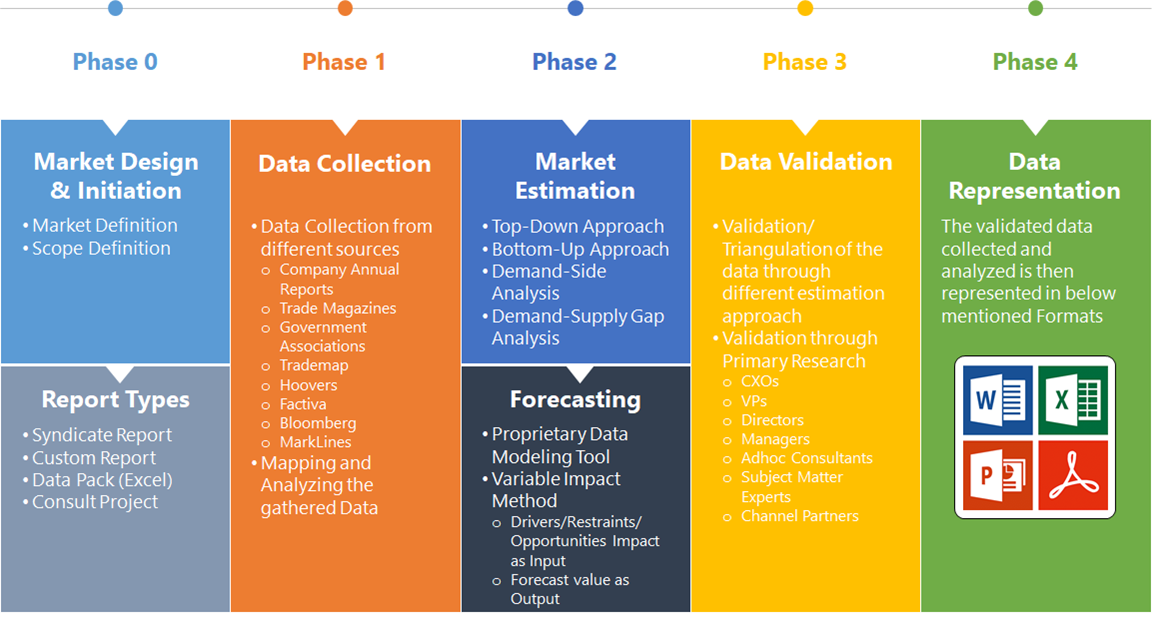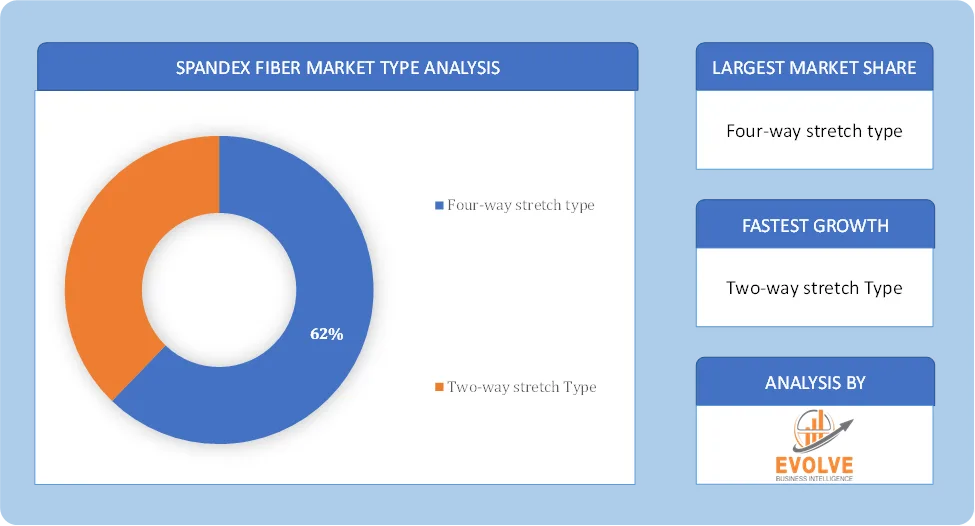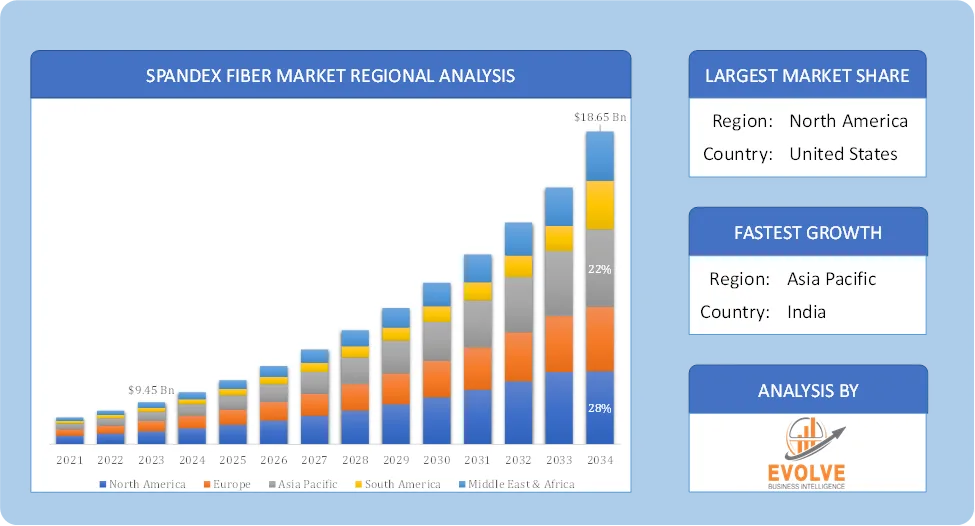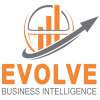Spandex Fiber Market Analysis and Global Forecast 2024-2034
$ 1,390.00 – $ 5,520.00Price range: $ 1,390.00 through $ 5,520.00
Spandex Fiber Market Research Report: Information By Type (Four-way stretch type, Two-way stretch Type), By Technology (Solution Dry-spinning, Wet-spinning, Others), By Process (Knitting, Weaving, Yarn Covering), By Application (Clothing, Medical, Others), and by Region — Forecast till 2034
Page: 165
Spandex Fiber Market Overview
The Spandex Fiber Market size accounted for USD 9.45 Billion in 2023 and is estimated to account for 10.25 Billion in 2024. The Market is expected to reah USD 18.65 Billion by 2034 growing at a compound annual growth rate (CAGR) of 7.85% from 2024 to 2034. The global spandex fiber market is experiencing significant growth, driven by increasing demand across various end-use industries, primarily apparel and sportswear. Spandex, known for its exceptional elasticity, durability, and comfort, is also finding increasing applications in medical and healthcare, industrial and automotive, and home furnishing sectors.
The spandex fiber market is poised for continued growth, driven by evolving consumer preferences for comfortable and functional clothing, the expanding applications in various industries, and the increasing focus on sustainable and innovative fiber technologies.
Global Spandex Fiber Market Synopsis
 Spandex Fiber Market Dynamics
Spandex Fiber Market Dynamics
The major factors that have impacted the growth of Spandex Fiber Market are as follows:
Drivers:
Ø Rising Demand in the Apparel Industry
Spandex is widely used in sportswear, activewear, lingerie, swimwear, and casual wear due to its superior elasticity and comfort. The growing athleisure trend has increased consumer demand for stretchable and durable fabrics. Innovations in fiber blending, dyeing techniques, and sustainable production processes have enhanced the performance and durability of spandex fibers and developments in biodegradable and recycled spandex are gaining traction to address environmental concerns and Online retail platforms are accelerating the availability of spandex-based clothing, making it more accessible to consumers worldwide.
Restraint:
- High Production Costs and Fluctuations in Raw Material Prices
Spandex fiber manufacturing involves complex polymerization processes and high energy consumption, leading to elevated production costs. The dependence on specialized raw materials like polyurethane makes it costlier than other synthetic fibers like polyester or nylon. The primary raw materials for spandex production, such as polyurethane and PTMEG (polytetramethylene ether glycol), are derived from petroleum and Volatile crude oil prices directly impact raw material costs, affecting overall production and profitability and the availability of substitutes like elastane blends, polyester, and natural rubber in stretchable fabrics poses a threat to spandex demand.
Opportunity:
⮚ Expanding Applications in Medical and Healthcare
The increasing use of spandex in compression garments, orthopedic braces, and surgical applications presents growth potential. The aging population and rising cases of chronic conditions (like lymphedema and varicose veins) drive demand for medical-grade spandex. The global fitness boom and rising popularity of athleisure wear are boosting the need for high-performance stretchable fabrics and innovations in moisture-wicking and durable spandex blends provide opportunities for textile manufacturers. Growth in online shopping platforms has improved the accessibility and demand for spandex-based apparel and digitalization in the fashion industry enables brands to introduce customized and on-demand spandex clothing.
Spandex Fiber Market Segment Overview
Based on Type, the market is segmented based on Four-way stretch type, Two-way stretch Type. The Two-way stretch Type segment dominant the market. The performance apparel segment is expanding due to the growing demand for activewear, athleisure, and sportswear, as consumers increasingly prioritize comfort, flexibility, and durability. Spandex’s exceptional stretch and shape retention make it the ideal choice for these applications. Manufacturers are exploring biodegradable spandex, recycling technologies, and environmentally conscious production methods to minimize ecological impact.
By Technology
Based on Technology, the market segment has been divided into Solution Dry-spinning, Wet-spinning, Others. The solution dry-spinning segment dominant the market. Compared to other techniques, such as wet spinning and melt spinning, the high spinning speed of solution dry-spinning significantly increases the product’s productivity. The solvent utilized in solution dry-spinning is combustible. Hence post-spinning processes are undertaken to remove all solvent.
By Process
Based on Process, the market segment has been divided into Knitting, Weaving, Yarn Covering. The Knitting segment dominant the market. The global knitwear market is experiencing robust growth, driven by increasing fashion consciousness, demand for comfortable clothing, and the rising popularity of athleisure wear. The unique properties of spandex enhance the functionality, comfort, and fit of a wide array of knitted apparel, and the growth of the overall knitwear market ensures a strong and continued demand for spandex in this application area.
By Application
Based on Application, the market segment has been divided into Clothing, Medical, Others. The Clothing segment dominant the market. It’s driven by evolving consumer lifestyles, fashion trends, and the unique performance benefits offered by spandex in various apparel applications. The demand for comfortable, flexible, and durable clothing will continue to fuel the growth of spandex consumption in this sector globally.
Global Spandex Fiber Market Regional Analysis
Based on region, the global Spandex Fiber Market has been divided into North America, Europe, Asia-Pacific, the Middle East & Africa, and Latin America. North America is projected to dominate the use of the Spandex Fiber Market followed by the Asia-Pacific and Europe regions.
 North America Spandex Fiber Market
North America Spandex Fiber Market
North America holds a dominant position in the Spandex Fiber Market. North America is a hub for innovation in textile technology, with companies focusing on developing sustainable and eco-friendly spandex alternatives. there is high demand for premium and performance-based fabrics, especially in sportswear, activewear, and medical textiles and presence of major fashion and sports brands driving the adoption of high-quality, durable spandex fibers and Increasing investment in bio-based spandex production to address sustainability concerns.
Asia-Pacific Spandex Fiber Market
The Asia-Pacific region has indeed emerged as the fastest-growing market for the Spandex Fiber Market industry. Countries like China, India, South Korea, and Vietnam are major hubs due to low production costs and skilled labor availability. Largest producer and consumer of spandex fiber, driven by strong textile and apparel manufacturing industries. Increasing investment in bio-based spandex production to address sustainability concerns. Government initiatives in countries like India and China to boost manufacturing activities, including the textile sector, are indirectly supporting the growth of the spandex fiber market.
Competitive Landscape
The global Spandex Fiber Market is highly competitive, with numerous players offering a wide range of software solutions. The competitive landscape is characterized by the presence of established companies, as well as emerging startups and niche players. To increase their market position and attract a wide consumer base, the businesses are employing various strategies, such as product launches, and strategic alliances.
Prominent Players:
- Asahi Kasei Corporation
- Mitsubishi Chemical Corporation
- Taekwang Industrial Co.Ltd
- BASF SE
- Huafon Chemical Co. Ltd.
- Hyosung Corporation
- Indorama Corporation
- Teijin Limited
- Toray Industries Inc.
- Yantai Tayho Advanced Materials Co. Ltd.
Scope of the Report
Global Spandex Fiber Market, by Type
- Four-way stretch type
- Two-way stretch Type
Global Spandex Fiber Market, by Technology
- Solution Dry-spinning
- Wet-spinning
- Others
Global Spandex Fiber Market, by Process
- Knitting
- Weaving
- Yarn Covering
Global Spandex Fiber Market, by Application
- Clothing
- Medical
- Others
Global Spandex Fiber Market, by Region
- North America
- US
- Canada
- Mexico
- Europe
- UK
- Germany
- France
- Italy
- Spain
- Benelux
- Nordic
- Rest of Europe
- Asia Pacific
- China
- Japan
- South Korea
- Indonesia
- Austalia
- Malaysia
- India
- Rest of Asia Pacific
- South America
- Brazil
- Argentina
- Rest of South America
- Middle East & Africa
- Saudi Arabia
- UAE
- Egypt
- South Africa
- Rest of Middle East & Africa
| Parameters | Indicators |
|---|---|
| Market Size | 2034: USD 18.65 Billion |
| CAGR (2024-2034) | 7.85% |
| Base year | 2022 |
| Forecast Period | 2024-2034 |
| Historical Data | 2021 (2017 to 2020 On Demand) |
| Report Coverage | Revenue Forecast, Competitive Landscape, Growth Factors, and Trends |
| Key Segmentations | Type, Technology, Process, Application |
| Geographies Covered | North America, Europe, Asia-Pacific, South America, Middle East, Africa |
| Key Vendors | Asahi Kasei Corporation, Mitsubishi Chemical Corporation, Taekwang Industrial Co.Ltd, BASF SE, Huafon Chemical Co. Ltd., Hyosung Corporation, Indorama Corporation, Teijin Limited, Toray Industries Inc. and Yantai Tayho Advanced Materials Co. Ltd. |
| Key Market Opportunities | · Expanding Applications in Medical and Healthcare
· Increasing Demand from the Sports and Athleisure Industry |
| Key Market Drivers | · Rising Demand in the Apparel Industry
· Technological Advancements in Textile Manufacturing |
REPORT CONTENT BRIEF:
- High-level analysis of the current and future Spandex Fiber Market trends and opportunities
- Detailed analysis of current market drivers, restraining factors, and opportunities in the future
- Spandex Fiber Market historical market size for the year 2021, and forecast from 2023 to 2033
- Spandex Fiber Market share analysis at each product level
- Competitor analysis with detailed insight into its product segment, Government & Defense strength, and strategies adopted.
- Identifies key strategies adopted including product launches and developments, mergers and acquisitions, joint ventures, collaborations, and partnerships as well as funding taken and investment done, among others.
- To identify and understand the various factors involved in the global Spandex Fiber Market affected by the pandemic
- To provide a detailed insight into the major companies operating in the market. The profiling will include the Government & Defense health of the company’s past 2-3 years with segmental and regional revenue breakup, product offering, recent developments, SWOT analysis, and key strategies.
Frequently Asked Questions (FAQ)
What is the study period of this market?
The study period of the global Spandex Fiber Market is 2021- 2033
What is the growth rate of the global Spandex Fiber Market?
The global Spandex Fiber Market is growing at a CAGR of 7.85% over the next 10 years
Which region has the highest growth rate in the market of Spandex Fiber Market?
Asia Pacific is expected to register the highest CAGR during 2024-2034
Which region has the largest share of the global Spandex Fiber Market?
North America holds the largest share in 2022
Who are the key players in the global Spandex Fiber Market?
Asahi Kasei Corporation, Mitsubishi Chemical Corporation, Taekwang Industrial Co.Ltd, BASF SE, Huafon Chemical Co. Ltd., Hyosung Corporation, Indorama Corporation, Teijin Limited, Toray Industries Inc. and Yantai Tayho Advanced Materials Co. Ltd. etc. are the major companies operating in the market.
Do you offer Post Sale Support?
Yes, we offer 16 hours of analyst support to solve the queries
Do you sell particular sections of a report?
Yes, we provide regional as well as country-level reports. Other than this we also provide a sectional report. Please get in contact with our sales representatives.
Press Release

Global Pharmaceutical Manufacturing Market to Reach $1.38 Trillion by 2035 with 7.35% CAGR, New Research Shows

The Global Mammography Market Is Estimated To Record a CAGR of Around 10.29% During The Forecast Period

Glue Stick Market to Reach USD 2.35 Billion by 2034

Podiatry Service Market to Reach USD 11.88 Billion by 2034

Microfluidics Technology Market to Reach USD 32.58 Billion by 2034

Ferric Chloride Market to Reach USD 10.65 Billion by 2034

Family Practice EMR Software Market to Reach USD 21.52 Billion by 2034

Electric Hairbrush Market to Reach USD 15.95 Billion by 2034

Daily Bamboo Products Market to Reach USD 143.52 Billion by 2034

Cross-border E-commerce Logistics Market to Reach USD 112.65 Billion by 2034
Table of Content
CHAPTER 1. Executive Summary
CHAPTER 2. Scope of the Study
2.1. Market Definition
2.2. Market Scope & Segmentation
2.2.1. Objective of Report
CHAPTER 3. Evolve BI Methodology
3.1. Data Collection & Validation Approach
3.2. Market Size Estimation and Forecast
CHAPTER 4. Exclusive Analysis
4.1. Market Opportunity Score
4.1.1. Technology Segement – Market Opportunity Score
4.1.2. Type Segment – Market Opportunity Score
4.1.3. Process Segment – Market Opportunity Score
4.1.4. Application Hospital Segment – Market Opportunity Score
4.2. Key Market Influencing Indicators
CHAPTER 5. Market Insights and Trends
5.1. Value Chain Analysis
5.1.1. Raw Material
5.1.2. Manufacturing Process
5.1.3. Distribution Channel
5.1.4. End User
5.2. Porter’s Five Forces Analysis
5.2.1. Bargaining Power of Buyers
5.2.2. Bargaining Power of Suppliers
5.2.3. Threat of New Entrant
5.2.4. Threat of Substitute
5.2.5. Industry Rivalry
5.3. COVID-19 Impact and Post COVID Scenario on Spandex Fiber Market
5.3.1. Impact of COVID-19
5.3.2. Government Support and Industry Revival Policies
5.3.3. Measures Taken by Companies to Mitigate Negative Impact
5.3.4. Post COVID Trend
CHAPTER 6. MArket Dynamics
6.1. Introduction
6.2. Drivers
6.2.1. Driver 1
6.2.2. Driver 2
6.2.3. Driver 3
6.3. Restraints
6.3.1. Restraint 1
6.3.2. Restraint 2
6.4. Opportunity
6.4.1. Opportunity 1
CHAPTER 7. Spandex Fiber Market, By Technology
7.1. Introduction
7.1.1. Solution Dry-spinning
7.1.2. Wet-spinning
7.1.3. Others
CHAPTER 8. Spandex Fiber Market, By Type
8.1. Introduction
8.1.1. Four-way stretch type
8.1.2. Two-way stretch Type
CHAPTER 9. Spandex Fiber Market, By Application
9.1. Introduction
9.1.1. Clothing
9.1.2. Medical
9.1.3. Others
CHAPTER 10. Spandex Fiber Market, By Process
10.1.Introduction
10.1.1. Knitting
10.1.2. Weaving
10.1.3. Yarn Covering
CHAPTER 11. Spandex Fiber Market, By Region
11.1. Introduction
11.2. NORTH AMERICA
11.2.1. North America: Market Size and Forecast, By Country, 2024 – 2034 ($ Million)
11.2.2. North America: Market Size and Forecast, By Technology, 2024 – 2034 ($ Million)
11.2.3. North America: Market Size and Forecast, By Type, 2024 – 2034 ($ Million)
11.2.4. North America: Market Size and Forecast, By Application, 2024 – 2034 ($ Million)
11.2.5. North America: Market Size and Forecast, By Process, 2024 – 2034 ($ Million)
11.2.6. US
11.2.6.1. US: Market Size and Forecast, By Technology, 2024 – 2034 ($ Million)
11.2.6.2. US: Market Size and Forecast, By Type, 2024 – 2034 ($ Million)
11.2.6.3. US: Market Size and Forecast, By Application, 2024 – 2034 ($ Million)
11.2.6.4. US: Market Size and Forecast, By Process, 2024 – 2034 ($ Million)
11.2.7. CANADA
11.2.7.1. Canada: Market Size and Forecast, By Technology, 2024 – 2034 ($ Million)
11.2.7.2. Canada: Market Size and Forecast, By Type, 2024 – 2034 ($ Million)
11.2.7.3. Canada: Market Size and Forecast, By Application, 2024 – 2034 ($ Million)
11.2.7.4. Canada: Market Size and Forecast, By Process, 2024 – 2034 ($ Million)
11.2.8. MEXICO
11.2.8.1. Mexico: Market Size and Forecast, By Technology, 2024 – 2034 ($ Million)
11.2.8.2. Mexico: Market Size and Forecast, By Type, 2024 – 2034 ($ Million)
11.2.8.3. Mexico: Market Size and Forecast, By Application, 2024 – 2034 ($ Million)
11.2.8.4. Mexico: Market Size and Forecast, By Process, 2024 – 2034 ($ Million)
11.3. Europe
11.3.1. Europe: Market Size and Forecast, By Country, 2024 – 2034 ($ Million)
11.3.2. Europe: Market Size and Forecast, By Technology, 2024 – 2034 ($ Million)
11.3.3. Europe: Market Size and Forecast, By Type, 2024 – 2034 ($ Million)
11.3.4. Europe: Market Size and Forecast, By Application, 2024 – 2034 ($ Million)
11.3.5. Europe: Market Size and Forecast, By Process, 2024 – 2034 ($ Million)
11.3.6. U.K.
11.3.6.1. U.K.: Market Size and Forecast, By Technology, 2024 – 2034 ($ Million)
11.3.6.2. U.K.: Market Size and Forecast, By Type, 2024 – 2034 ($ Million)
11.3.6.3. U.K.: Market Size and Forecast, By Application, 2024 – 2034 ($ Million)
11.3.6.4. U.K.: Market Size and Forecast, By Process, 2024 – 2034 ($ Million)
11.3.7. GERMANY
11.3.7.1. Germany: Market Size and Forecast, By Technology, 2024 – 2034 ($ Million)
11.3.7.2. Germany: Market Size and Forecast, By Type, 2024 – 2034 ($ Million)
11.3.7.3. Germany: Market Size and Forecast, By Application, 2024 – 2034 ($ Million)
11.3.7.4. Germany: Market Size and Forecast, By Process, 2024 – 2034 ($ Million)
11.3.8. FRANCE
11.3.8.1. France: Market Size and Forecast, By Technology, 2024 – 2034 ($ Million)
11.3.8.2. France: Market Size and Forecast, By Type, 2024 – 2034 ($ Million)
11.3.8.3. France: Market Size and Forecast, By Application, 2024 – 2034 ($ Million)
11.3.8.4. France: Market Size and Forecast, By Process, 2024 – 2034 ($ Million)
11.3.9. ITALY
11.3.9.1. Italy: Market Size and Forecast, By Technology, 2024 – 2034 ($ Million)
11.3.9.2. Italy: Market Size and Forecast, By Type, 2024 – 2034 ($ Million)
11.3.9.3. Italy: Market Size and Forecast, By Application, 2024 – 2034 ($ Million)
11.3.9.4. Italy: Market Size and Forecast, By Process, 2024 – 2034 ($ Million)
11.3.10. SPAIN
11.3.10.1. Spain: Market Size and Forecast, By Technology, 2024 – 2034 ($ Million)
11.3.10.2. Spain: Market Size and Forecast, By Type, 2024 – 2034 ($ Million)
11.3.10.3. Spain: Market Size and Forecast, By Application, 2024 – 2034 ($ Million)
11.3.10.4. Spain: Market Size and Forecast, By Process, 2024 – 2034 ($ Million)
11.3.11. BENELUX
11.3.11.1. BeNeLux: Market Size and Forecast, By Technology, 2024 – 2034 ($ Million)
11.3.11.2. BeNeLux: Market Size and Forecast, By Type, 2024 – 2034 ($ Million)
11.3.11.3. BeNeLux: Market Size and Forecast, By Application, 2024 – 2034 ($ Million)
11.3.11.4. BeNeLux: Market Size and Forecast, By Process, 2024 – 2034 ($ Million)
11.3.12. RUSSIA
11.3.12.1. Russia: Market Size and Forecast, By Technology, 2024 – 2034 ($ Million)
11.3.12.2. Russia: Market Size and Forecast, By Type, 2024 – 2034 ($ Million)
11.3.12.3. Russia: Market Size and Forecast, By Application, 2024 – 2034 ($ Million)
11.3.12.4. Russia: Market Size and Forecast, By Process, 2024 – 2034 ($ Million)
11.3.13. REST OF EUROPE
11.3.13.1. Rest of Europe: Market Size and Forecast, By Technology, 2024 – 2034 ($ Million)
11.3.13.2. Rest of Europe: Market Size and Forecast, By Type, 2024 – 2034 ($ Million)
11.3.13.3. Rest of Europe: Market Size and Forecast, By Application, 2024 – 2034 ($ Million)
11.3.13.4. Rest of Europe: Market Size and Forecast, By Process, 2024 – 2034 ($ Million)
11.4. Asia Pacific
11.4.1. Asia Pacific: Market Size and Forecast, By Country, 2024 – 2034 ($ Million)
11.4.2. Asia Pacific: Market Size and Forecast, By Technology, 2024 – 2034 ($ Million)
11.4.3. Asia Pacific: Market Size and Forecast, By Type, 2024 – 2034 ($ Million)
11.4.4. Asia Pacific: Market Size and Forecast, By Application, 2024 – 2034 ($ Million)
11.4.5. Asia Pacific: Market Size and Forecast, By Process, 2024 – 2034 ($ Million)
11.4.6. CHINA
11.4.6.1. China: Market Size and Forecast, By Technology, 2024 – 2034 ($ Million)
11.4.6.2. China: Market Size and Forecast, By Type, 2024 – 2034 ($ Million)
11.4.6.3. China: Market Size and Forecast, By Application, 2024 – 2034 ($ Million)
11.4.6.4. China: Market Size and Forecast, By Process, 2024 – 2034 ($ Million)
11.4.7. JAPAN
11.4.7.1. Japan: Market Size and Forecast, By Technology, 2024 – 2034 ($ Million)
11.4.7.2. Japan: Market Size and Forecast, By Type, 2024 – 2034 ($ Million)
11.4.7.3. Japan: Market Size and Forecast, By Application, 2024 – 2034 ($ Million)
11.4.7.4. Japan: Market Size and Forecast, By Process, 2024 – 2034 ($ Million)
11.4.8. INDIA
11.4.8.1. India: Market Size and Forecast, By Technology, 2024 – 2034 ($ Million)
11.4.8.2. India: Market Size and Forecast, By Type, 2024 – 2034 ($ Million)
11.4.8.3. India: Market Size and Forecast, By Application, 2024 – 2034 ($ Million)
11.4.8.4. India: Market Size and Forecast, By Process, 2024 – 2034 ($ Million)
11.4.9. SOUTH KOREA
11.4.9.1. South Korea: Market Size and Forecast, By Technology, 2024 – 2034 ($ Million)
11.4.9.2. South Korea: Market Size and Forecast, By Type, 2024 – 2034 ($ Million)
11.4.9.3. South Korea: Market Size and Forecast, By Application, 2024 – 2034 ($ Million)
11.4.9.4. South Korea: Market Size and Forecast, By Process, 2024 – 2034 ($ Million)
11.4.10. THAILAND
11.4.10.1. Thailand: Market Size and Forecast, By Technology, 2024 – 2034 ($ Million)
11.4.10.2. Thailand: Market Size and Forecast, By Type, 2024 – 2034 ($ Million)
11.4.10.3. Thailand: Market Size and Forecast, By Application, 2024 – 2034 ($ Million)
11.4.10.4. Thailand: Market Size and Forecast, By Process, 2024 – 2034 ($ Million)
11.4.11. INDONESIA
11.4.11.1. Indonesia: Market Size and Forecast, By Technology, 2024 – 2034 ($ Million)
11.4.11.2. Indonesia: Market Size and Forecast, By Type, 2024 – 2034 ($ Million)
11.4.11.3. Indonesia: Market Size and Forecast, By Application, 2024 – 2034 ($ Million)
11.4.11.4. Indonesia: Market Size and Forecast, By Process, 2024 – 2034 ($ Million)
11.4.12. MALAYSIA
11.4.12.1. Malaysia: Market Size and Forecast, By Technology, 2024 – 2034 ($ Million)
11.4.12.2. Malaysia: Market Size and Forecast, By Type, 2024 – 2034 ($ Million)
11.4.12.3. Malaysia: Market Size and Forecast, By Application, 2024 – 2034 ($ Million)
11.4.12.4. Malaysia: Market Size and Forecast, By Process, 2024 – 2034 ($ Million)
11.4.13. AUSTRALIA
11.4.13.1. Australia: Market Size and Forecast, By Technology, 2024 – 2034 ($ Million)
11.4.13.2. Australia: Market Size and Forecast, By Type, 2024 – 2034 ($ Million)
11.4.13.3. Australia: Market Size and Forecast, By Application, 2024 – 2034 ($ Million)
11.4.13.4. Australia: Market Size and Forecast, By Process, 2024 – 2034 ($ Million)
11.4.14. REST FO ASIA PACIFIC
11.4.14.1. Rest fo Asia Pacific: Market Size and Forecast, By Technology, 2024 – 2034 ($ Million)
11.4.14.2. Rest fo Asia Pacific: Market Size and Forecast, By Type, 2024 – 2034 ($ Million)
11.4.14.3. Rest fo Asia Pacific: Market Size and Forecast, By Application, 2024 – 2034 ($ Million)
11.4.14.4. Rest fo Asia Pacific: Market Size and Forecast, By Process, 2024 – 2034 ($ Million)
11.5. South America
11.5.1. South America: Market Size and Forecast, By Country, 2024 – 2034 ($ Million)
11.5.2. South America: Market Size and Forecast, By Technology, 2024 – 2034 ($ Million)
11.5.3. South America: Market Size and Forecast, By Type, 2024 – 2034 ($ Million)
11.5.4. South America: Market Size and Forecast, By Application, 2024 – 2034 ($ Million)
11.5.5. South America: Market Size and Forecast, By Process, 2024 – 2034 ($ Million)
11.5.6. BRAZIL
11.5.6.1. Brazil: Market Size and Forecast, By Technology, 2024 – 2034 ($ Million)
11.5.6.2. Brazil: Market Size and Forecast, By Type, 2024 – 2034 ($ Million)
11.5.6.3. Brazil: Market Size and Forecast, By Application, 2024 – 2034 ($ Million)
11.5.6.4. Brazil: Market Size and Forecast, By Process, 2024 – 2034 ($ Million)
11.5.7. ARGENTINA
11.5.7.1. Argentina: Market Size and Forecast, By Technology, 2024 – 2034 ($ Million)
11.5.7.2. Argentina: Market Size and Forecast, By Type, 2024 – 2034 ($ Million)
11.5.7.3. Argentina: Market Size and Forecast, By Application, 2024 – 2034 ($ Million)
11.5.7.4. Argentina: Market Size and Forecast, By Process, 2024 – 2034 ($ Million)
11.5.8. REST OF SOUTH AMERICA
11.5.8.1. Rest of South America: Market Size and Forecast, By Technology, 2024 – 2034 ($ Million)
11.5.8.2. Rest of South America: Market Size and Forecast, By Type, 2024 – 2034 ($ Million)
11.5.8.3. Rest of South America: Market Size and Forecast, By Application, 2024 – 2034 ($ Million)
11.5.8.4. Rest of South America: Market Size and Forecast, By Process, 2024 – 2034 ($ Million)
11.6. Middle East & Africa
11.6.1. Middle East & Africa: Market Size and Forecast, By Country, 2024 – 2034 ($ Million)
11.6.2. Middle East & Africa: Market Size and Forecast, By Technology, 2024 – 2034 ($ Million)
11.6.3. Middle East & Africa: Market Size and Forecast, By Type, 2024 – 2034 ($ Million)
11.6.4. Middle East & Africa: Market Size and Forecast, By Application, 2024 – 2034 ($ Million)
11.6.5. Middle East & Africa: Market Size and Forecast, By Process, 2024 – 2034 ($ Million)
11.6.6. SAUDI ARABIA
11.6.6.1. Saudi Arabia: Market Size and Forecast, By Technology, 2024 – 2034 ($ Million)
11.6.6.2. Saudi Arabia: Market Size and Forecast, By Type, 2024 – 2034 ($ Million)
11.6.6.3. Saudi Arabia: Market Size and Forecast, By Application, 2024 – 2034 ($ Million)
11.6.6.4. Saudi Arabia: Market Size and Forecast, By Process, 2024 – 2034 ($ Million)
11.6.7. UAE
11.6.7.1. UAE: Market Size and Forecast, By Technology, 2024 – 2034 ($ Million)
11.6.7.2. UAE: Market Size and Forecast, By Type, 2024 – 2034 ($ Million)
11.6.7.3. UAE: Market Size and Forecast, By Application, 2024 – 2034 ($ Million)
11.6.7.4. UAE: Market Size and Forecast, By Process, 2024 – 2034 ($ Million)
11.6.8. EGYPT
11.6.8.1. Egypt: Market Size and Forecast, By Technology, 2024 – 2034 ($ Million)
11.6.8.2. Egypt: Market Size and Forecast, By Type, 2024 – 2034 ($ Million)
11.6.8.3. Egypt: Market Size and Forecast, By Application, 2024 – 2034 ($ Million)
11.6.8.4. Egypt: Market Size and Forecast, By Process, 2024 – 2034 ($ Million)
11.6.9. SOUTH AFRICA
11.6.9.1. South Africa: Market Size and Forecast, By Technology, 2024 – 2034 ($ Million)
11.6.9.2. South Africa: Market Size and Forecast, By Type, 2024 – 2034 ($ Million)
11.6.9.3. South Africa: Market Size and Forecast, By Application, 2024 – 2034 ($ Million)
11.6.9.4. South Africa: Market Size and Forecast, By Process, 2024 – 2034 ($ Million)
11.6.10. REST OF MIDDLE EAST & AFRICA
11.6.10.1. Rest of Middle East & Africa: Market Size and Forecast, By Technology, 2024 – 2034 ($ Million)
11.6.10.2. Rest of Middle East & Africa: Market Size and Forecast, By Type, 2024 – 2034 ($ Million)
11.6.10.3. Rest of Middle East & Africa: Market Size and Forecast, By Application, 2024 – 2034 ($ Million)
11.6.10.4. Rest of Middle East & Africa: Market Size and Forecast, By Process, 2024 – 2034 ($ Million)
CHAPTER 12. Competitive Landscape
12.1. Competitior Benchmarking 2024
12.2. Market Share Analysis
12.3. Key Developments Analysis By Top 5 Companies
12.4. Market Share Acquisition Strategies: Analysis of Key Approaches Employed by Top Players
CHAPTER 13. Company Profiles
13.1. Asahi Kasei Corporation
13.1.1. Business Overview
13.1.2. Financial Analysis
13.1.2.1. Business Segment Revenue, 2018, 2019, 2020, $ Million
13.1.2.2. Geographic Revenue Mix, 2020 (% Share)
13.1.3. Product Portfolio
13.1.4. Recent Development and Strategies Adopted
13.1.5. SWOT Analysis
13.2. Mitsubishi Chemical Corporation
13.3. Taekwang Industrial Co.Ltd
13.4. BASF SE
13.5. Huafon Chemical Co. Ltd.
13.6. Hyosung Corporation
13.7. Indorama Corporation
13.8. Teijin Limited
13.9. Toray Industries Inc.
13.10. Yantai Tayho Advanced Materials Co. Ltd.
Connect to Analyst
Research Methodology








